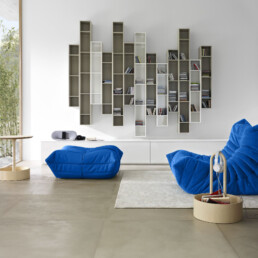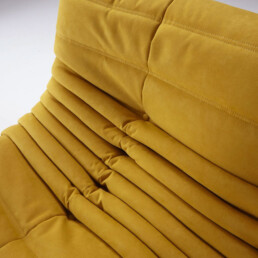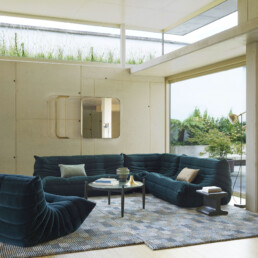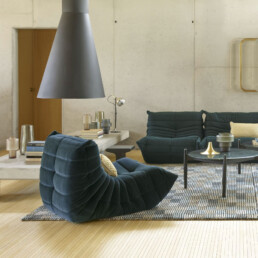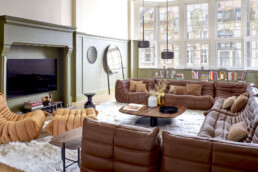The story behind the revered design.
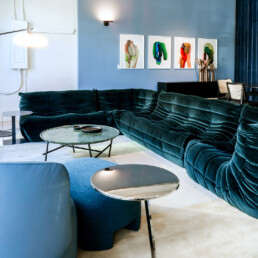
It is said that all good things must come to an end. While this is undeniably the case in most things in life, the enduring style of Ligne Roset’s iconic Togo sofa shows all the signs of an ageless wonder whose best days remain indefinitely in front of it. Although born in an era of shag carpeting, floral furnishings and patterned linoleum in 1973, the Togo has remained effortlessly in vogue throughout the decades while flash-in-the-pan trends have come and gone all around it.
Despite its royal status of present-day, the concept for the Togo came about in rather simple fashion – as great ideas are often wont to do. While standing at his sink one morning in the 1960s, French designer Michel Ducaroy observed how his aluminum toothpaste tube “folded back on itself like a stovepipe and closed at both ends.” A few quick sketches later, his most recognizable design, Togo, was born.
In 1973 the cushy, crimped, ground-hugging sofa series was unveiled at the Salon des Arts Ménagers in Paris. It was immediately met with skepticism. The first of its kind, the hunk of foam wrapped in quilted polyester took people by surprise. The conventional wisdom of the day dictated that sofas had to have a base. “People thought we forgot or didn’t have time to build one,” recalls Antoine Roset, global marketing director and great-great-grandson of Ligne Roset’s founder. Despite these mixed reactions, Togo still won the René-Gabriel prize for high quality at a fair price, and it wasn’t long before the revolutionary design won over its detractors.
Comfortable, groovy and easy to move, Togo has maintained a dedicated fan club of artists, designers and collectors over the decades since its inception. Musician and designer Lenny Kravitz installed a quartet of Togos in his Paris townhouse, and today it has developed a fevered following among design lovers on social media the world over.
Sustainability alongside innovation.
Today’s Togo reflects Ligne Roset’s holistic approach to furniture design alongside the authenticity of its original design. Founded over 160 years ago in 1860, sustainability – from the design process to green manufacturing and employee wellness – is at the forefront of the company’s mandate.
Based in Briord, the French village is home to one of Europe’s most advanced manufacturing complexes. All of their furniture is produced in line with FCBA-certified forest-friendly wood, while sophisticated UV acrylic varnishes are used to minimize air pollution. This ensures all furnishings are completely free of the biocides, heavy metals and halogenated compounds typically found in furniture varnishes.
Furthermore, roughly 56 percent of all factory waste is recycled, including all foam, cartons, leathers, fabrics, wadding, polyethylene and paper. “When one has the good fortune to grow and develop in an environment of such quality, one naturally wants to protect it,” says Pierre Roset, President of Ligne Roset.
But perhaps the most important detail that sets the Togo apart from its contemporaries is the cohort of expert craftspeople who flawlessly execute on each design. Ensuring an attention to detail rarely seen in modern machine-led manufacturing processes, the majority of Ligne Roset’s furnishings are finished by hand. Additionally, new employees are trained in a comprehensive one-year apprenticeship program that ensures the company’s meticulous standards are passed on from generation to generation.


